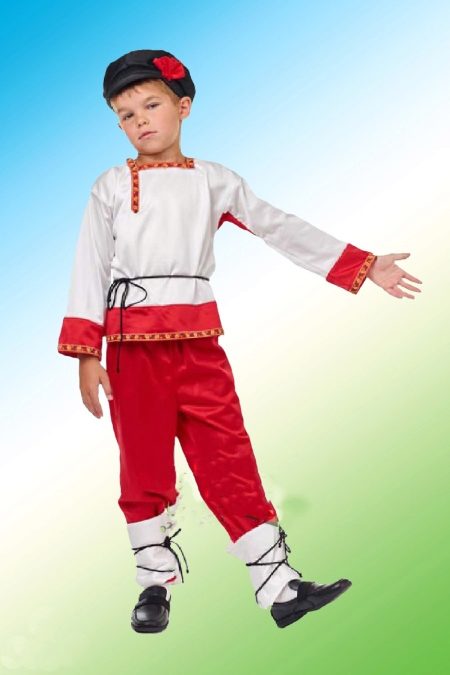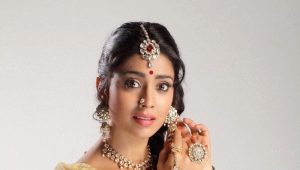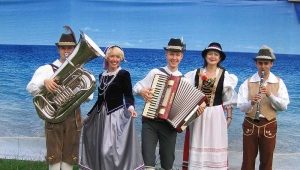Russian folk costume for a boy
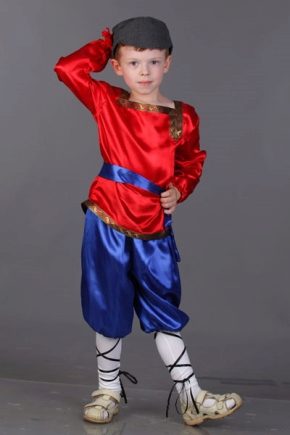
Story
Russian folk costume has a long, centuries-old history. The appearance of the national costume was influenced by many factors, such as natural conditions, daily routine and working conditions, religiosity, prosperity. Clothing for peasants was distinguished by functionality, as well as the absence of unnecessary details. It provided maximum freedom of movement and saved from adverse weather conditions. There were no buttons in clothes for work, shirts were girdled with sashes, and wide sinuses were used instead of pockets.

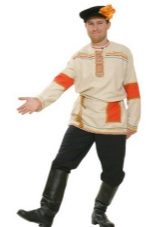

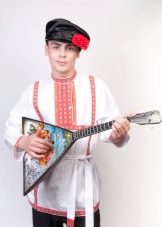



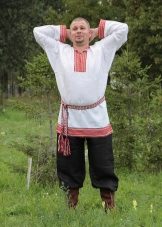
At the same time, for the sake of practicality and simplicity of costumes, neither men nor women were in a hurry to refuse bright colors. They actively used the dyeing of fabrics with natural dyes, which nature gave them. Red was considered the most common and affordable color, since the raw material for it (madder) grew in almost every garden. In addition to red, white and blue colors were often used in the folk costume. The green color could be present only in the colors of fabrics supplied from the Eastern countries and were available only to the wealthy classes.

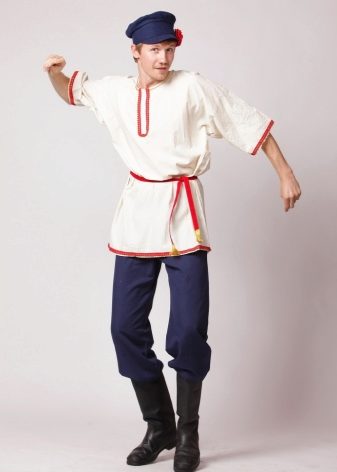

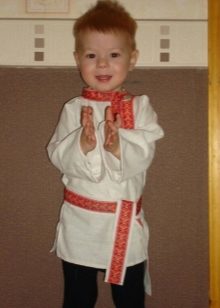
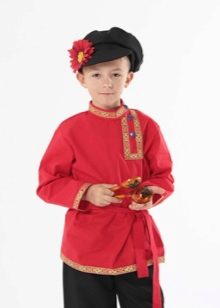
At that time, ribbons, lace trim, rhombuses, oblique crosses, octagonal stars, and other geometric shapes, as well as Christmas trees, bushes, figurines of women, birds, horses, embroidery with colored threads were actively used as decorative elements at that time.Many models were created using different-colored fabrics. Great importance was attached to the patterns on the fabrics, which protected from evil spirits. Ornaments were located on the sleeves, hem and collar.

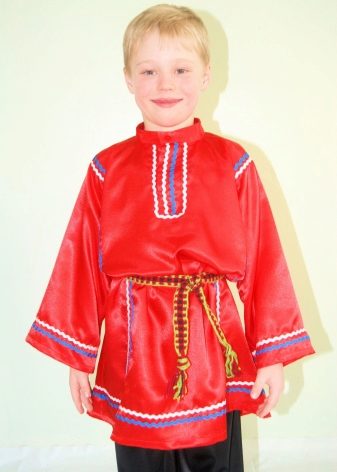


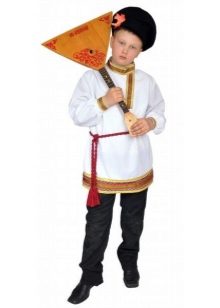
The main fabrics that were used for tailoring peasant clothes were canvas and homespun wool. Factory fabrics: silk, satin, brocade, colored cashmere and satin began to be used from the middle of the 19th century.
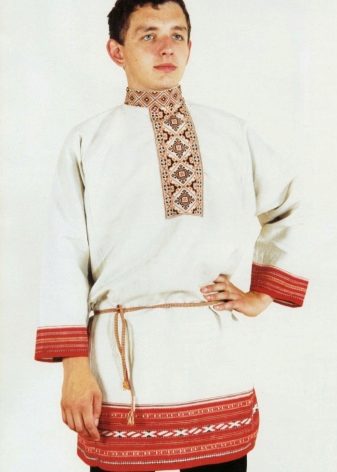
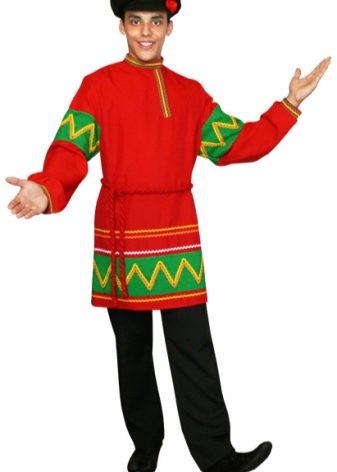

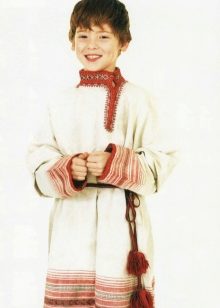
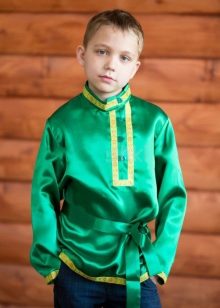
Men's blouses did not differ in great variety. They were garments made of two panels that covered the chest and back. As connecting elements, fabric pieces in the shape of a quadrangle were used, located on the shoulders. The cut of a shirt did not depend on the social status of its owner; it was possible to determine the owner's well-being only by the quality of the fabric. As a rule, the poor wore shirts from ordinary linen, and the rich from silk or satin.
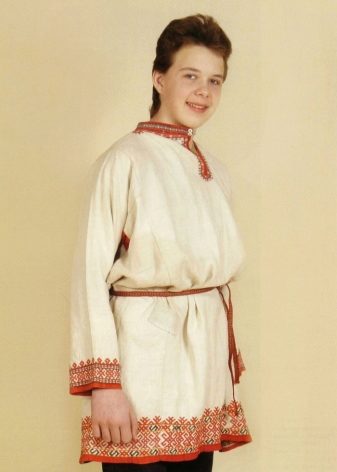
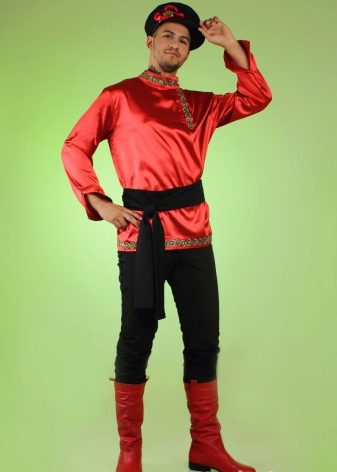
Interesting details and features
The first costume for little boys was the father's blouse, in which the babies were wrapped up immediately after birth. Often, cuts of fabric left over from tailoring adult clothes were used to create children's clothing. The reason for this was the belief that in this way the strength of the parents saves the baby from the evil eye. Children's clothes were also decorated with drawings and patterns, which took on the role of amulets.
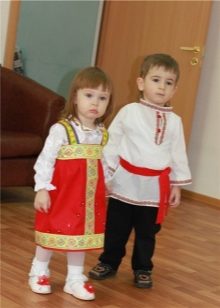
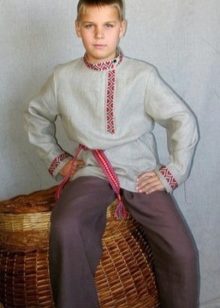
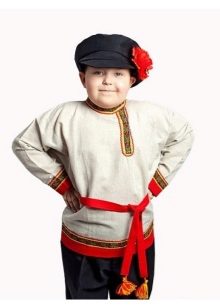

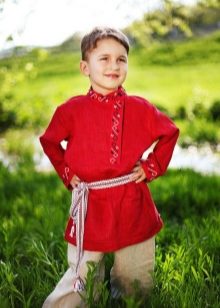
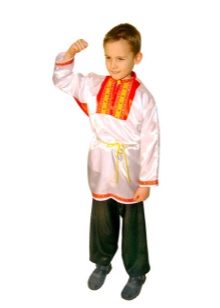
Children's clothing for boys and girls was not much different and basically it was a linen shirt up to the heels. Children could wear adult clothes only after passing through special ceremonies. This tradition was kept for quite a long time in village families.Over time, the rite of passage from the category of "children" to the category of "youth" was forgotten, and only some of its elements were used in wedding ceremonies. An interesting fact is that back in the 19th century, in some regions of Russia, young men wore children's clothes until the very wedding - a shirt covered with a belt.
In those areas where his wardrobe depended on the age of the boy, in adolescence, trousers were complemented by a shirt with a belt. Also, the guys used underpants, sometimes a vest or jacket. Children and adolescents did not have outerwear and, as necessary, they put on the clothes of adults.
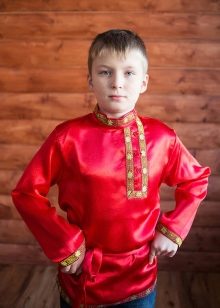
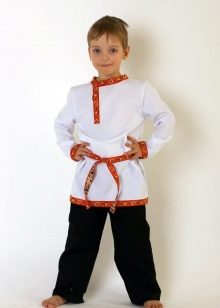
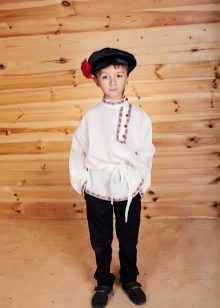



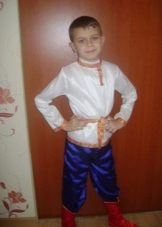
Shoes
Traditional Russian shoes are leather shoes, felt boots and bast shoes.
Leather shoes were worn by representatives of various classes. Soft leather shoes, which were found during excavations, are shaped like modern booties, have a free cut and a sewn-on sole. Boots were made of genuine leather and could be of two types: soft ones with a pull-out top and shaft, and a more complex design with a head, back, shaft and sole.
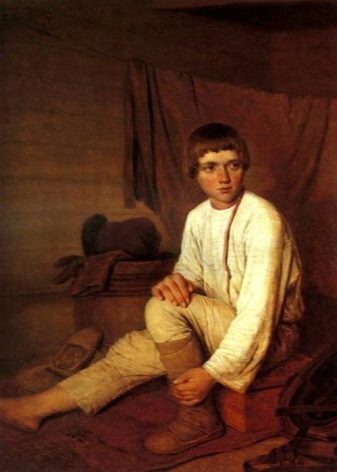
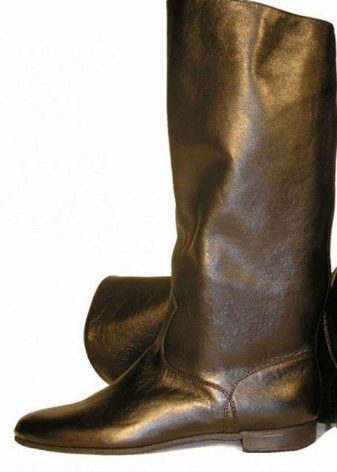
Felt boots are warm felt boots, knitted from sheep's wool, which are considered traditional footwear of Eurasian nomads. In Russia, felt boots appeared during the period of the Golden Horde, but they became widespread in the first half of the 19th century - from the moment their industrial production began. Since the middle of the 18th century, Yaroslavl province has been considered the center of felting production, where sheep breeding flourished at that time.
Bast shoes are shoes woven from wood bast and are very common among the peasant population of Russia. Bast shoes were tied to the feet with laces, which were laces twisted from the same bast as the bast shoes themselves.Bast shoes were worn on onuchi - footcloths, which, during long walking, had to be periodically rewound.

Outfit Ideas
Children's costume in the Russian folk style Ivanushka is a great option for a fairy-tale staging at any holiday. The popular hero of Russian fairy tales will perfectly fit into the New Year's scenario, as well as into the performance on the occasion of a birthday or any other celebration, as well as during the game teaching of children in preschool institutions. The costume consists of a white shirt decorated with red fabric with white dots, blue pants, a cap and a belt.
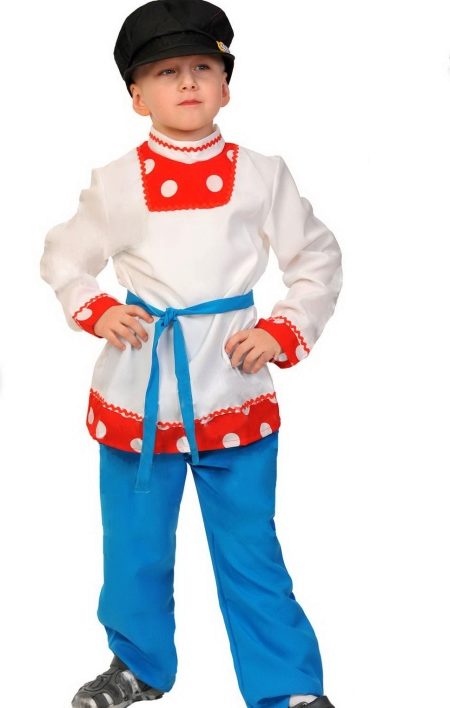
The carnival costume of the Kuban Cossack will appeal to many boys. The suit is part of the culture that was formed from the military class. The image of a young Cossack was created using a white satin shirt with a stand-up collar and patch pockets on the chest, black pants with red stripes, a military cap and a colored belt.
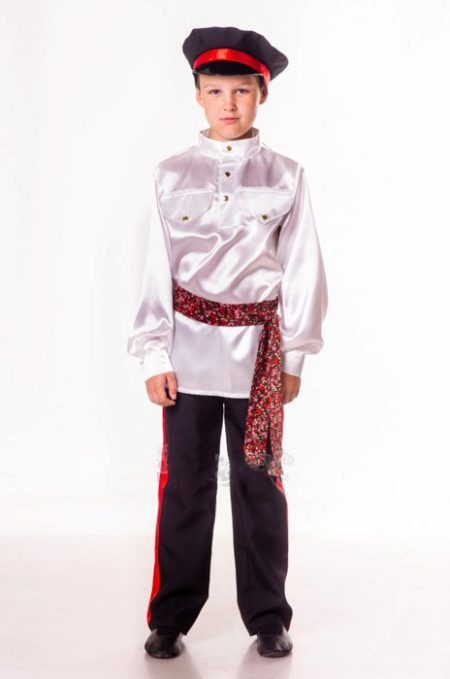
Gzhel is one of the traditional and easily recognizable Russian folk crafts. Blue and white patterns attract attention and fascinate with their beauty. A carnival costume for boys with the use of Gzhel painting elements allows you to create an outstanding and elegant look for a boy. The costume set includes: blue satin pants, a white satin shirt with a Gzhel pattern insert, a blue belt and an elegant cap.
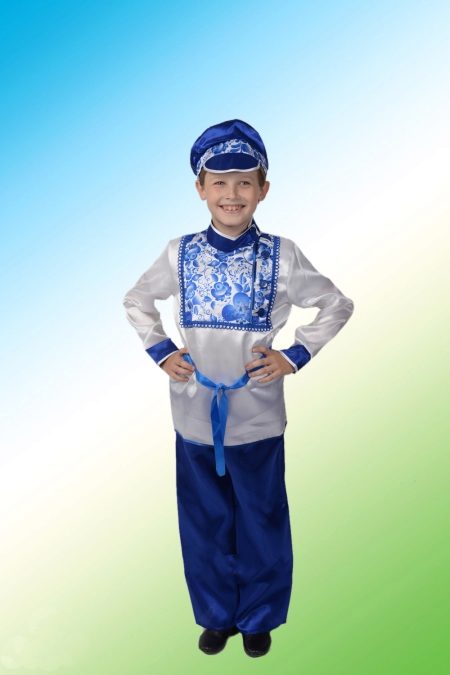
A very bright and colorful costume for a boy in the style of the old Russian Khokhloma craft. When creating the costume, the colors traditional for Khokhloma were used: black, red, green and gold. The costume consists of a red shirt decorated with a floral pattern and braid, black pants and a black cap with a yellow flower. An ideal complement to the costume will be shoes stylized as bast shoes.
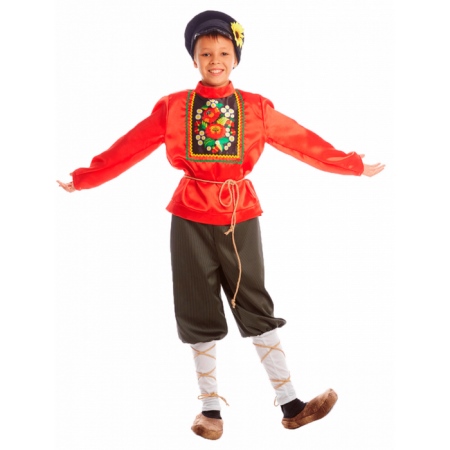
An elegant suit for a boy "dancing quadrille" charges with its energy, sending it immediately into a dance. The carnival costume set includes a bright yellow satin shirt with an insert of a floral ornament on the chest and at the bottom of the sleeves, black pants and a cap decorated with a red flower.

Suit for a boy, very clearly conveying the features of the Russian costume. In this set, traditional colors are used, and attention is focused on the main attributes of the folk costume. The set consists of a red and white shirt with a braid, red pants, an elegant cap with a red flower, footcloths and garters. Traditional Russian bast shoes are perfect for this costume.
